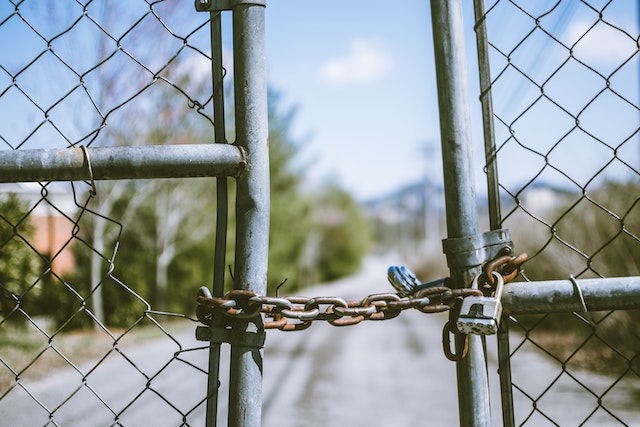
For many businesses, ensuring the security of their premises is of utmost importance. A key aspect of comprehensive commercial security planning is implementing effective perimeter protection measures.
Perimeter security is the first line of defense, deterring potential intruders and keeping your property and assets safe. Here, we explore essential tips for commercial security planning to enhance perimeter protection and safeguard your business.
Conduct a Security Assessment to Define Your Perimeter
Start by conducting a comprehensive security assessment of your premises to identify your perimeter. A perimeter generally borders vulnerable areas or those with restricted access. Your perimeter may encompass your entire facility or only part of it.
Thoroughly assessing your property will help you define your perimeter and its characteristics, such as entry and exit points, physical obstacles or challenges, and the potential impact of a breach [1]. Looking at each of these points is crucial in developing the best perimeter protection for your facility.
Determine Lighting and Weather Conditions
Some perimeter protection technologies require proper lighting or fair weather conditions to work correctly. Depending on your unique perimeter security needs, these may or may not work for you.
For example, traditional surveillance cameras need light to work. But if you need to monitor your facility 24/7 and don’t have supplemental lighting, that’s a problem. It’s important to refer back to your perimeter security needs so you can invest in technology that aligns with your goals. For example, if supplemental lighting is unrealistic, thermal or infrared cameras may be necessary.
There are surveillance cameras, perimeter sensors, and access control solutions designed to work in harsh weather conditions and low light [2]. Consider the environment your perimeter is in and look for technology that will meet your unique situation.
Assign Alerts and Notifications
Implementing intrusion detection systems can provide an added layer of security in perimeter protection technologies. These systems use sensors, motion detectors, and alarms to detect unauthorized access attempts.
When designing your perimeter protection system, you’ll need to assign alerts and notifications to a person or team and develop a protocol for handling security breaches. You can even automate a response to these alerts, such as closing a gate, locking down the wing of a building, or calling the police.
It’s important to assess the false alarm probability of the technology based on your needs when designing perimeter protection. Since false alarms can be disruptive and cause resources to be unnecessarily spent, it’s essential to have the right system for your perimeter, ideally with AI-powered analytics, to minimize false alarms as much as possible [3].
Identify Blind Spots and Technology Limitations
Depending on the size and shape of your perimeter, there are likely to be blind spots. It’s essential to identify these potential blind spots and create a plan for handling them, especially when quickly identifying an intruder or false alarm is crucial to your facility’s safety and security.
Understanding the limitations of perimeter security technologies and working to overcome them can help businesses better customize effective solutions for their properties. Often, a combination of techniques is necessary to address blind spots and implement comprehensive perimeter security.
Start Planning Your Perimeter Protection System With Surveillance Secure
Surveillance Secure has the perimeter technologies, expertise, and solutions modern businesses need to protect their properties. Contact us today at (877) 388-1248 to get started designing your custom perimeter protection system with our experienced team.

 Virginia DCJS Private Security Services ID #11-6085
Virginia DCJS Private Security Services ID #11-6085